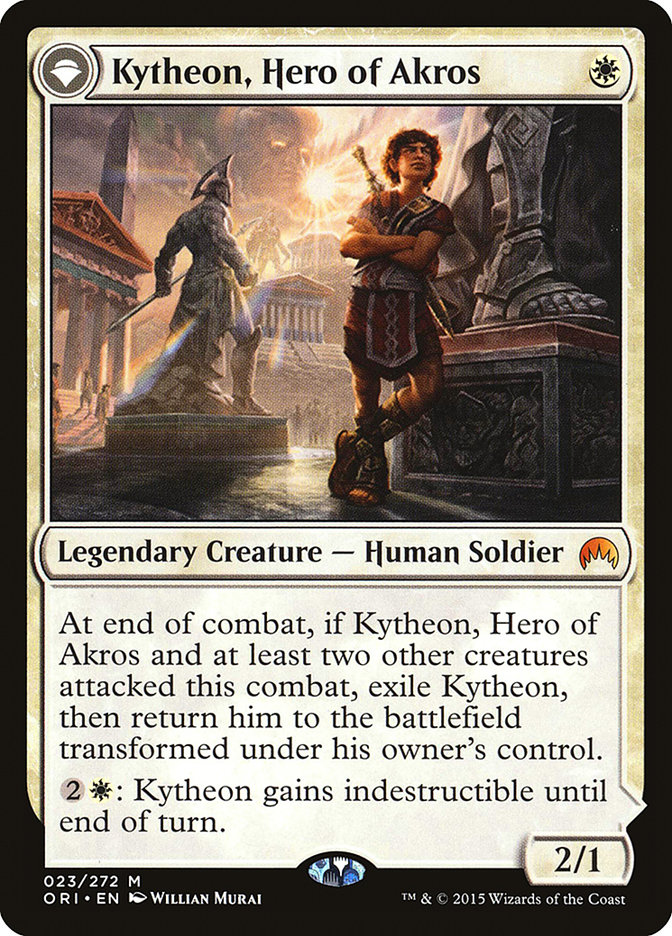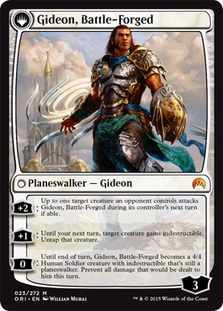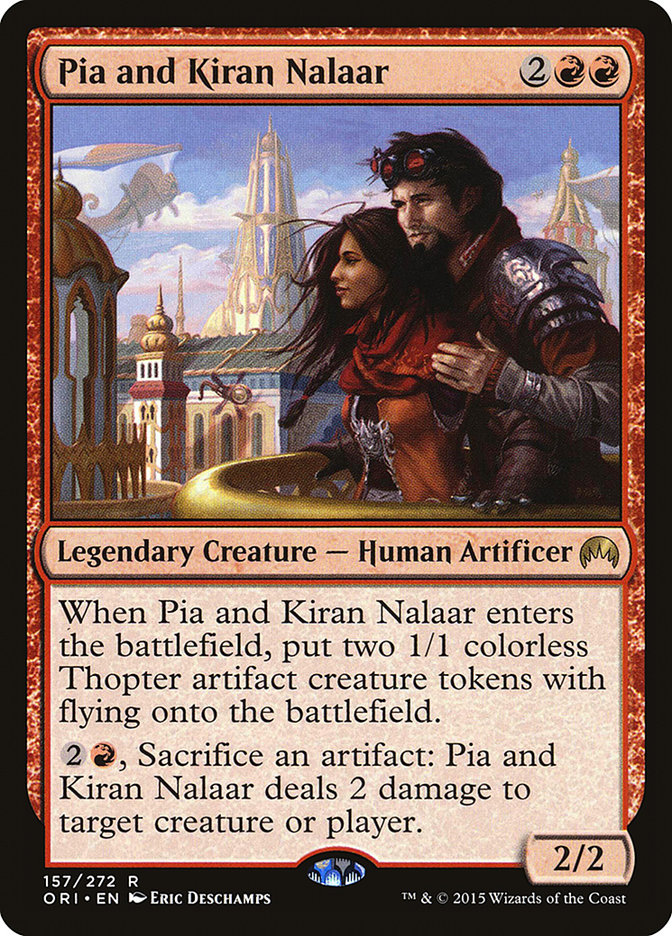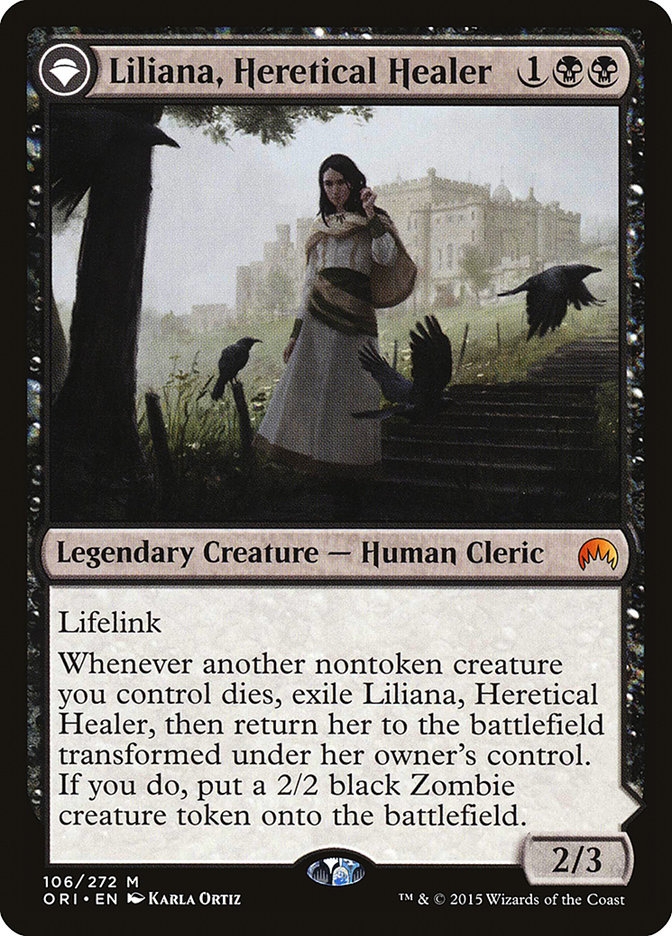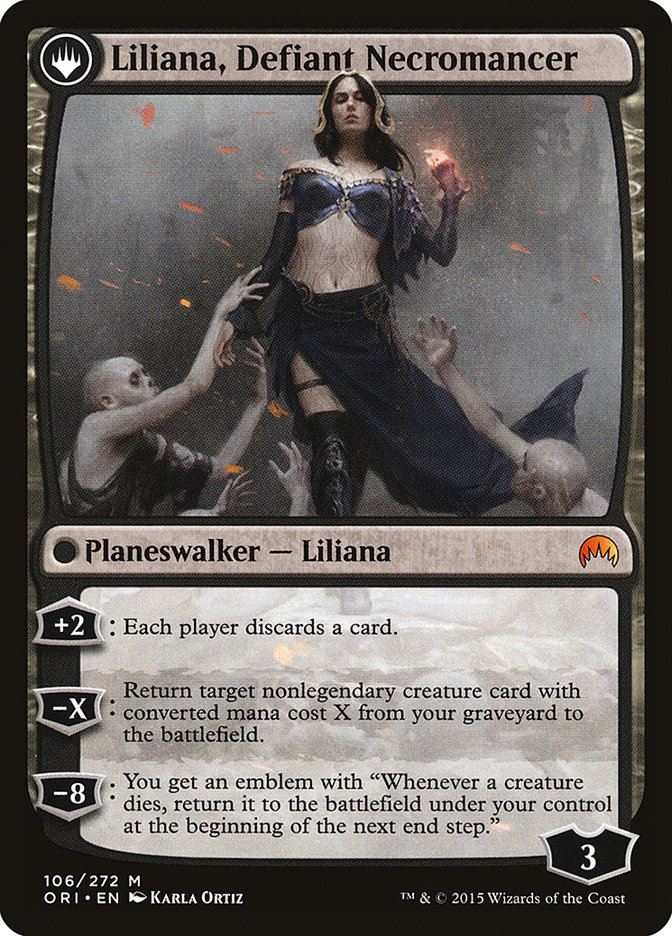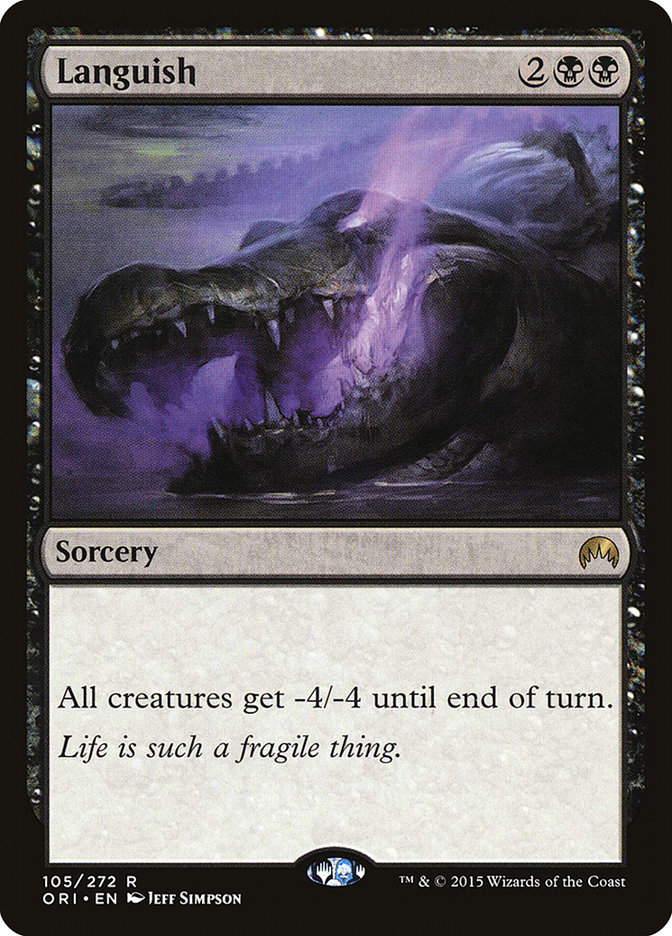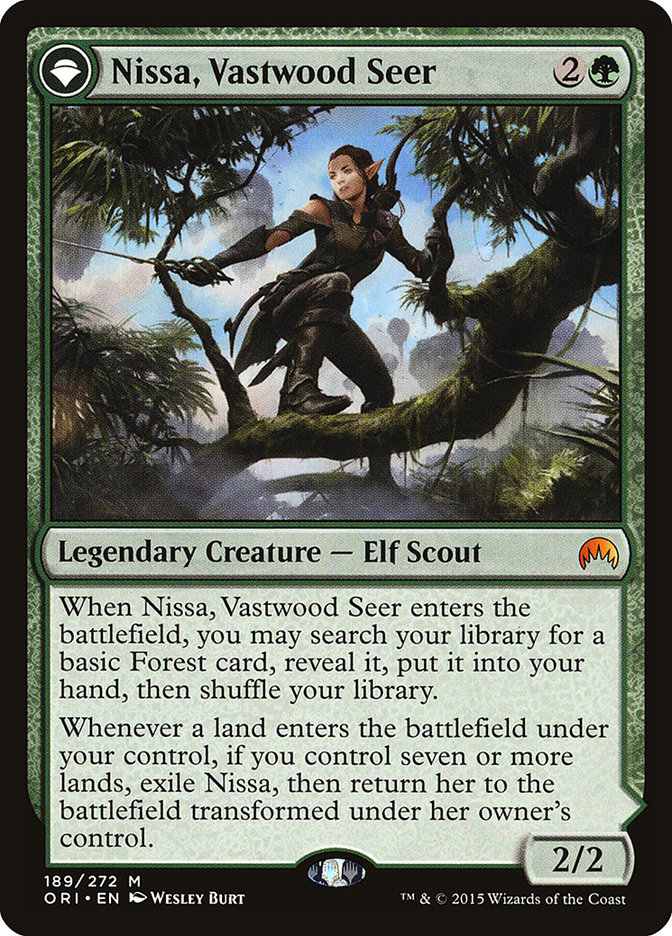That wonderful time of the quarter is here! Spoiler season is upon us and despite it being early in the Magic Origins revealing process, we’ve already got some spicy cards to be excited about. Let’s jump right in to exploring a few of my favorites so far.
So what’s at work here? On the surface, Kytheon is an aggressively-costed creature that rewards you for attacking by turning into a resilient threat that synergizes with having an additional board presence. The Gideon side accomplishes this both by allowing those creatures to protect your newly-flipped ‘walker with his +1 ability, but also by eating your opponent’s creatures with his +2. Due to the fact that there are now a surplus of one-mana two-power-options unlike we’ve ever seen in Magic before, I could see a strong incentive to try to build a deck that is capable of having three creatures in play and attacking by the third turn with three mana available to ensure Kytheon doesn’t die in combat, allowing him to flip. While I suspect that this is a perfectly viable strategy, my natural inclination is to utilize the new planeswalker as yet another resilient cog in what was already a deck chock full of hard-to-answer threats.
According to this data, G/W Company is the best-performing deck in Standard, and Kytheon is going to make it better.
Creatures (25)
- 4 Elvish Mystic
- 4 Fleecemane Lion
- 3 Courser of Kruphix
- 2 Hidden Dragonslayer
- 4 Den Protector
- 4 Deathmist Raptor
- 4 Kytheon, Hero of Akros
Lands (24)
Spells (11)

Kytheon is a perfect complement to a Collected Company strategy by being both an aggressive card early and representing a powerful threat if you reveal his inner spark. All of the creatures in G/W Company are either super-resilient or grant card advantage and as a result aren’t afraid of getting into the red zone to enable their new planeswalker. While I suspect great things from Kytheon as he is explored in a variety of shells, his natural strength in G/W Company may be the push the deck needs to usurp Abzan Aggro as the generally preferred aggressive creature deck of Standard.
As of now, this is probably my favorite card spoiled. Attempts have been made over the better part of the year to make a viable artifacts-matter deck, and I think that Chandra’s parents may finally make that strategy a reality. On the surface, this card doesn’t look like much, merely generating an average rate of four power and toughness for four mana, but spread across two additional creatures that synergize with the rare’s mini-Shrapnel Blast impression, we now have a role-player that grants a great deal of resiliency and reach. Gerry Thompson look at Temur Artifacts last week should serve as proper inspiration:
Creatures (22)
- 4 Ornithopter
- 4 Satyr Wayfinder
- 2 Rattleclaw Mystic
- 4 Den Protector
- 4 Deathmist Raptor
- 4 Pia and Kiran Nalaar
Lands (19)
Spells (19)

The issue with a decklist like this is how difficult it is to fit in the Commune with the Gods/Ensoul Artifact engine. As powerful as making an indestructible 5/5 is, what I’m really interested in with Pia is just killing my opponent. Maybe, as crazy as it sounds, we can ditch blue altogether.
Creatures (24)
- 4 Ornithopter
- 2 Elvish Mystic
- 4 Satyr Wayfinder
- 2 Rattleclaw Mystic
- 4 Den Protector
- 4 Deathmist Raptor
- 4 Pia and Kiran Nalaar
Lands (19)
Spells (17)

Now this is a deck I can get behind. Even just putting the smallest amount of pressure on our opponent can let us clog up the ground before burning our opponent out from ridiculously high life totals. Atarka’s Command may look a touch out-of-place, but even just in conjunction with two Thopter tokens, it can make a strong Shrapnel Blast impression while also letting the smattering of 1/1s we tend to have around get into combat against other aggressive decks. My biggest concern for now is how to construct the manabase. I don’t want to have a ton of enter-the-battlefield tapped lands, and I don’t want to max out on Mana Confluence like Atarka Red does, so for now it’s just an awkward undecided split. It’s also entirely possible that we can shave a Darksteel Citadel or two without Ensoul Artifact in the picture. The card still has a serviceable amount of utility with Shrapnel Blast and Team Nalaar, but it isn’t nearly as powerful.
While many players are interested in talking about Liliana’s applications in Standard, I’m actually more intrigued about what she can do in Modern:
Creatures (15)
Planeswalkers (4)
Lands (23)
Spells (18)

While it is clear that Liliana has a general weakness to Lightning Bolt, her synergy with Fulminator Mage and ability to soft lock opponents under her +2 forced discard/-3 resurrect Fulminator Mage cycle to re-buy Modern’s favorite land destruction spell appears quite powerful in a world full of big-mana decks. Even just being able to curve with Sakura-Tribe Elder into Liliana – who can then resurrect the Sakura-Tribe Elder the same turn that she flips and leaves you with a zombie to boot – is an easy way to get out in front of your opponent and drop a Death Cloud.
Her unique set of abilities to recycle cheap creatures easily could also be leveraged by the Collected Company combo deck:
Creatures (31)
- 4 Birds of Paradise
- 1 Eternal Witness
- 1 Fulminator Mage
- 4 Kitchen Finks
- 1 Murderous Redcap
- 3 Noble Hierarch
- 1 Linvala, Keeper of Silence
- 2 Viscera Seer
- 2 Spellskite
- 2 Melira, Sylvok Outcast
- 1 Scavenging Ooze
- 1 Fiend Hunter
- 1 Cartel Aristocrat
- 3 Voice of Resurgence
- 2 Anafenza, Kin-Tree Spirit
- 2 Liliana, Heretical Healer
Lands (22)
Spells (7)

I don’t claim to be anywhere near an expert of building these decks – I’ll leave that job to BBD – but I can see Liliana being incredibly powerful in this shell. Not only is she a creature that can get hit off of Company and Chord, but with the deck’s ability to sacrifice creatures at instant speed it will be incredibly easy to flip her. Once you do, you have your choice of either an awesome disruption tool or added redundancy for a huge portion of your deck. As a result, I would think it difficult to lose any game where she is able to stay flipped for multiple turns.
Back to Standard – this might be the big one.
As excited as I am to torture Chris Fennell for a week straight playtesting with this card, I’m even more ecstatic about its implications for the Pro Tour. This snapshot Mutilate is a big deal.
Cards that have risen in value:
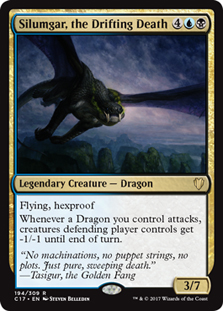
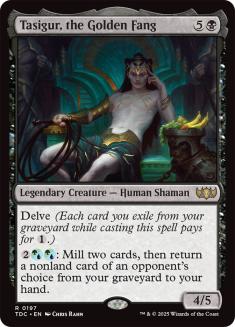
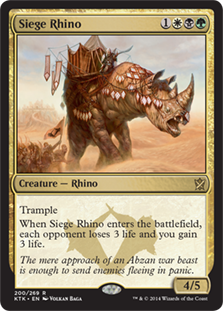
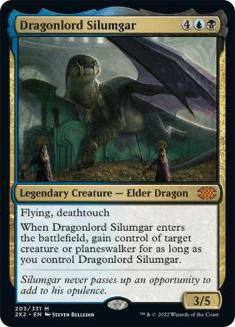
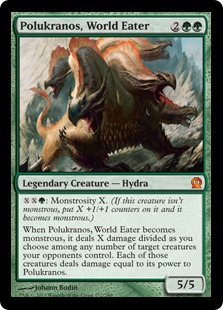
Cards that have lowered in value:
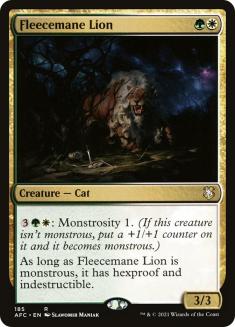
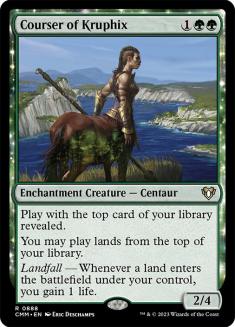
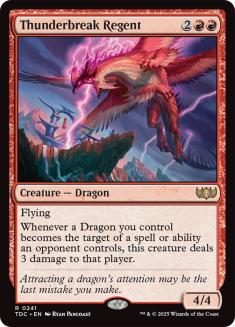
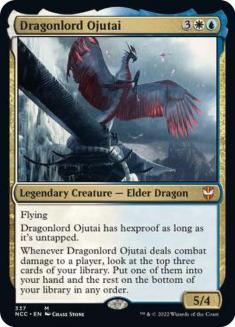
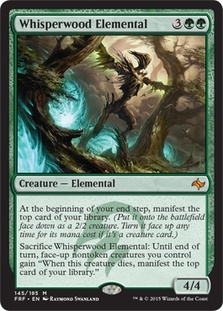
Creatures that cost three or more mana and don’t have a huge impact on the board the turn they enter the battlefield have gotten much worse. Furthermore, blue control decks can now be built differently – they are no longer quite so reliant on Bile Blight to mop up early pressure, and some of the more resilient threats like Fleecemane Lion and Rakasha Deathdealer don’t look nearly as imposing. Now U/B Control can chain their four-drop sweeper into a card draw spell on turn five, whereas before they often were forced to take another hit on the chin and spend that five mana to reset the board with Perilous Vault or Crux of Fate and only finally started to pull ahead on turn six. This change in play pattern may not sound that dramatic, but I assure you control strategies have just improved significantly and will not be nearly as reliant on the raw power of Dragonlord Ojutai as it currently is.
How might we build our deck?
Planeswalkers (2)
Lands (27)
Spells (31)

With the addition of Languish and Sphinx’s Tutelage, we may finally be able to revert to the old days of “playing no win conditions.” Tutelage may not look very impressive, but it is difficult for most decks to interact with and gives us a hands-off win condition that also functions as a card quality engine, cycling our removal when it is poor or limiting our exposure to mana flood. Here’s another take, which utilizes Silumgar, the Drifting Death for the purposes of cleaning up even the pesky x/5s:
Creatures (6)
Planeswalkers (1)
Lands (27)
Spells (26)

Regrettably, I feel Icefall Regent has to be included to meet the minimum required number of Dragons needed for Silumgar’s Scorn to be good. Otherwise, although not flashy, this deck looks consistent, powerful, and able to stave off quick aggression in a much more reliable manner than when Shouta Yasooka did battle in the finals of Pro Tour Dragons of Tarkir.
My final deck is bit more “out there,” but it shows Languish’s potential for shaking up this format, and even includes another card that hasn’t been receiving too much love thus far:
Creatures (23)
- 2 Elvish Visionary
- 3 Hornet Queen
- 4 Satyr Wayfinder
- 1 Gurmag Angler
- 2 Tasigur, the Golden Fang
- 4 Den Protector
- 4 Deathmist Raptor
- 3 Nissa, Vastwood Seer
Lands (23)
Spells (14)

Most look at Nissa, Vastwood Seer and see a card that doesn’t look playable. Let’s face it, it’s reasonable to think that the way Standard is configured – as a result of the Megamorph engine – it is difficult to fit a ton of three-drops into your deck and so it is natural to assume that Courser of Kruphix should win every time when competing for the slot.
Languish changes things.
I like that this deck gets to play a bunch of cheap creatures that can either buy time or put pressure on your opponent that immediately generate value before being whisked away to wherever washed-up Gators go. Further, we can break the symmetry on Languish with our powerful Delve threats that have five toughness and our use of the Megamorph package’s recursion.
What ultimately puts Nissa over the top, though, is Whip of Erebos. Once we’ve entered any long game, reanimating Nissa will likely search for our seventh land, with which we can immediately flip her into a powerful planeswalker that avoids the Whip’s unfortunate exile clause. Most decks in Standard are more interested in playing creatures that accelerate us and generating a ton of mana with Nykthos, but here we’re just going to make some land drops and grind them out honestly.
I can’t wait to see what else Magic Origins has in store over the next few weeks. What cards and new decks do you have your eye on so far?

